Leafhoppers process tea leaves “alive”
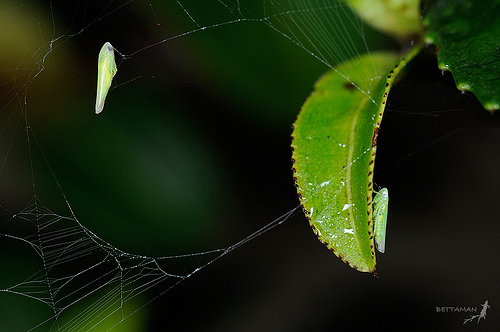
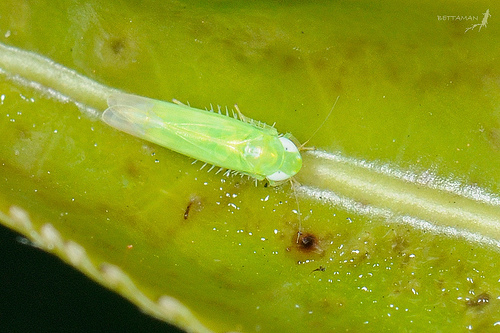 s come to tea leaves as if they wanted to treat them to a beautification care and make them queens. It is owing to these leafhoppers that this highly oxidized (about 70%) Taiwanese oolong gets its valued, noble taste.
s come to tea leaves as if they wanted to treat them to a beautification care and make them queens. It is owing to these leafhoppers that this highly oxidized (about 70%) Taiwanese oolong gets its valued, noble taste.The miniature leafhoppers, Jacoviasca formosana, feed on young leaves newly sprouted on the tea bush. They suck the juice of leaves, branches and buds and the bitten leaves start oxidizing while still “alive” on the tea plant.
The infested plant produces certain substances, among others monoterpendiol and hetrienol, which give the tea prepared from such leaves a unique, sweetly spicy aroma. Leaves bitten by the leafhoppers can be recognized by white edges.
Thus, Oriental Beauty producers welcome leafhoppers. With higher grades, you can be sure no pesticides were used in tea growing as it would kill the leafhoppers. Tea is grown in rather lower and warmer locations, where leafhoppers live.
The Oriental Beauty got its name from a queen, it is unknown which one
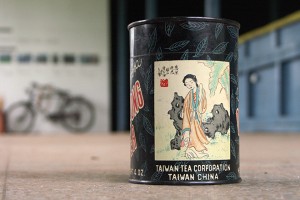
Swarms of small leafhoppers infested tea plantations every summer and fed on tea plant leaves, but at those times farmers did not bother to harvest the infested leaves. Merchants usually rejected the ruined crops.
The legend says that one famer from the Hsin Chu region did not want to accept 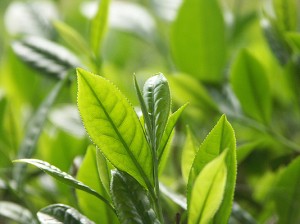 this ordeal and harvested and processed the bitten leaves. The tea was so great that he managed to double the usual price.
this ordeal and harvested and processed the bitten leaves. The tea was so great that he managed to double the usual price.
The new tea gradually acquired almost as many names as many tastes it conceals. After returning home, the farmer from the legend joyfully told everyone for how much he had sold the tea and thus the tea was at first called the Boast Tea (Pong Fong Cha).
The white edges of the bitten leaves gave the tea another name – the White Hair (Bai Hao Cha), and because of its many-coloured dry leaf it is also called the Five Colours Tea. However, probably the most popular name is the Oriental Beauty (Dong Fang Mei Ren), given by the British Queen Victoria or Elisabeth II – depending on which legend you read.
Whoever tastes this quality Taiwanese oolong once wants no other
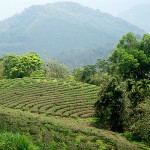 Whoever tastes this Oriental Beauty oolong easily remembers its taste and is able to recognize it. The range of tastes and tones is very colourful and rich, with a predominance of sweet fruits, citrus and spices (cinnamon or cloves). Its taste and aroma is often compared to the higher grades of Second Flush Darjeeling, with muscatel aroma being the common denominator.
Whoever tastes this Oriental Beauty oolong easily remembers its taste and is able to recognize it. The range of tastes and tones is very colourful and rich, with a predominance of sweet fruits, citrus and spices (cinnamon or cloves). Its taste and aroma is often compared to the higher grades of Second Flush Darjeeling, with muscatel aroma being the common denominator.For the Taiwanese, a beautiful oolong has the price of gold
They organize tea competitions there, where this delicious Taiwanese oolong is assessed. The winning teas are then auctioned at astronomic prices – the tea leaves are often balanced with gold. An old Taiwanese proverb says that fifteen kilograms equals the price of a house.
What is the best preparation method for Oriental Beauty?
Put a smaller handful of leaves (about 5g of tea) into a preheated small teapot of 1.5 dcl volume and pour over water at 90 – 95ᵒC. Let it brew for one minute and pour into preheated cups. This may be repeated, gradually prolonging the brewing time, as long as we still enjoy the taste of the tea. Mostly, especially with higher grades, it is possible to brew the tea up to ten times.I would suggest making enough time for this tea party, connecting it with very pleasant experience. You may choose nice teaware, prepare hot water into a thermos so that you do not have to keep running away, sit back and enjoy.
Daniel Klásek (Tea traveller)


































